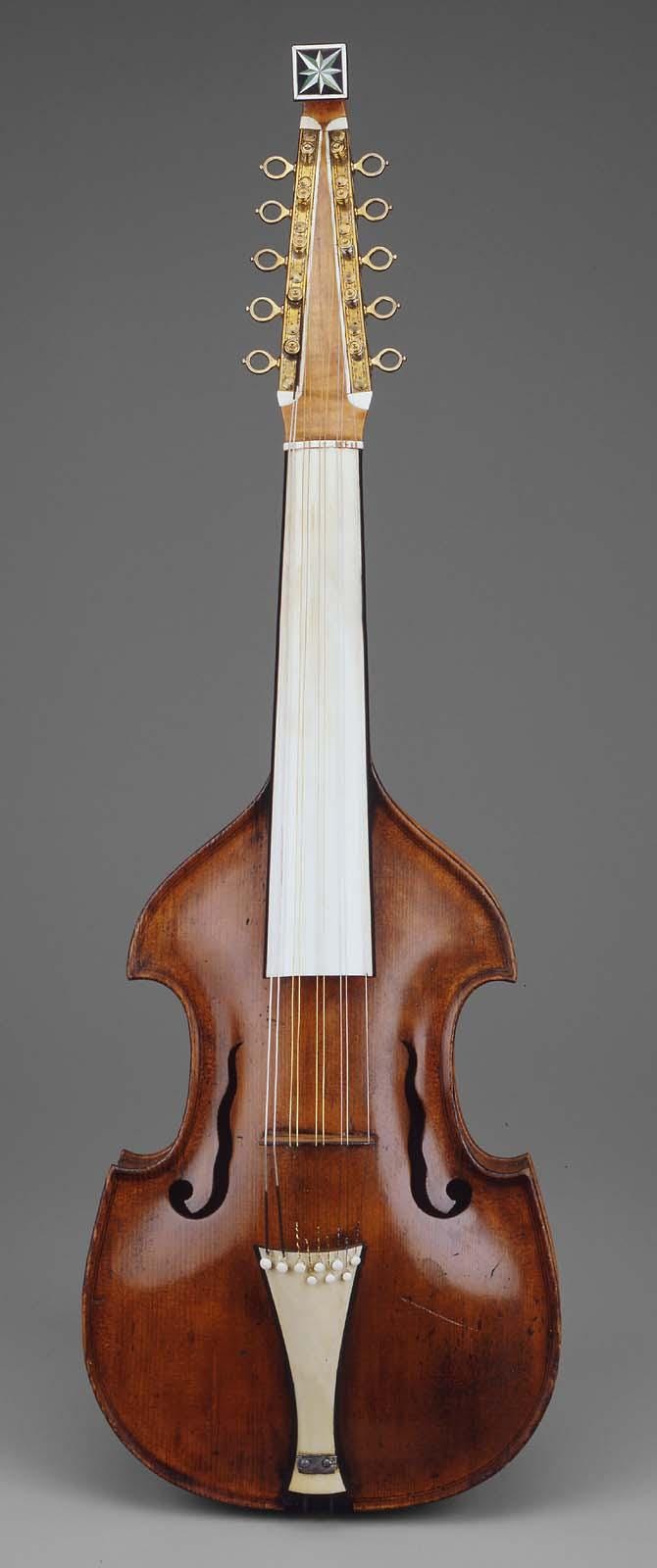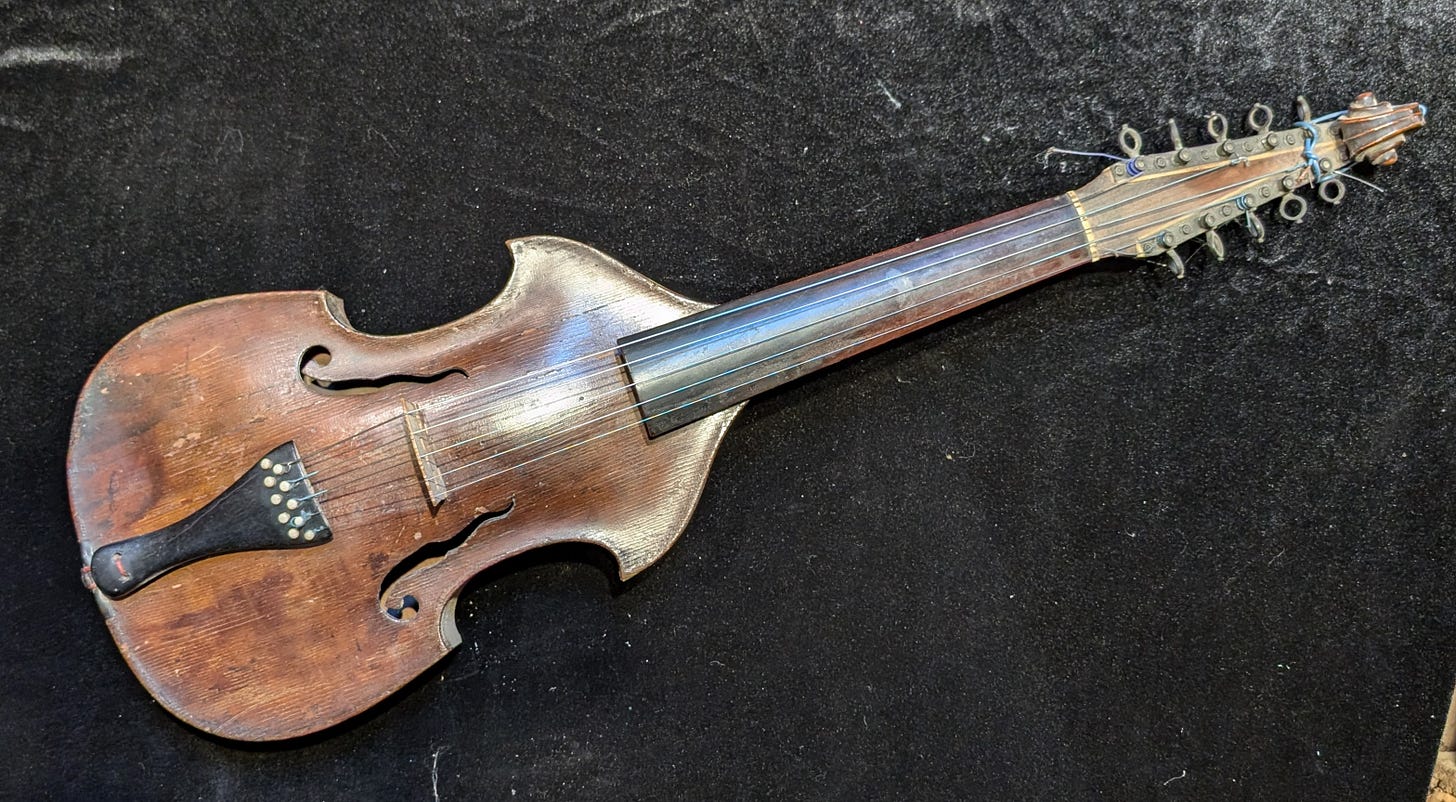Starting a new instrument - a Sultana after Perry 1777
An instrument by any other name would sound as sweet
My next project is to make a Sultana (also known as a Cither Viol, Salter, Saltero, and more names).
A Sultana by Perry and Wilkinson, 1794, Image credit: Boston MFA
I’ve been visiting some of these, measuring and planning. Pamela kindly let me view and measure her instrument, believed to be one of the earliest. Unlike the instruments from 1777-1801 that I’ve seen, it has no overhangs, and is less deep (33m ribs vs 41mm), and has a distinctly viol-like button.
Pamela’s Cither Viol / Sultana, possibly 1764 (no label). Image - Paul Fremantle
Ignore the scroll, that is a poorly executed replacement for a missing finial.
I started making the mould and ribs based on a drawing I took of Pamela’s instrument. However, I then visited Dublin to look at the two instruments they have in the National Museum (catalogue items LM1178 (dated 1777) and NMIDF:1908.119 (dated 1801)).
Two Sultanas in the National Museum Dublin, photo by Paul Fremantle, kind thanks to the museum for permission
These are clearly the more evolved instruments: more attention has been paid to the decoration, but they also show a more evolved outline, overhangs and luscious deep arching. They are clearly influenced by Perry’s experiences as a violin maker: a round button, overhanging edges, overlapping ribs rather than mitres. They still have the distinctive tuning machines, which Perry got from William Gibson, a fellow Dublin luthier (who invented them for his English Guittars).
Having seen these, I have decided to update my plan and remake the mould and ribs based on my drawings and measurements. These are clearly beautiful instruments and the acme of the Sultana’s brief life as an instrument.
More to come on this!






